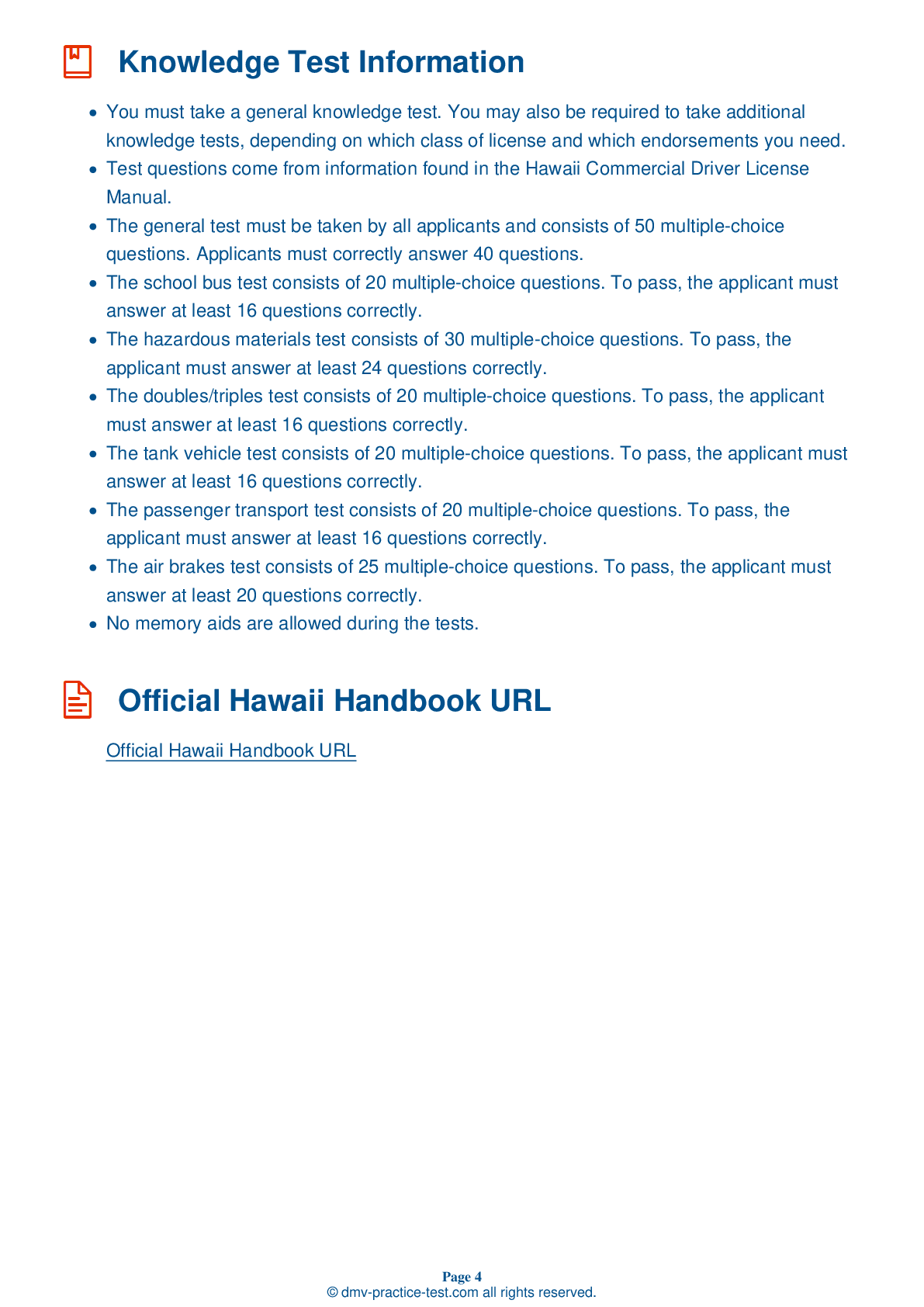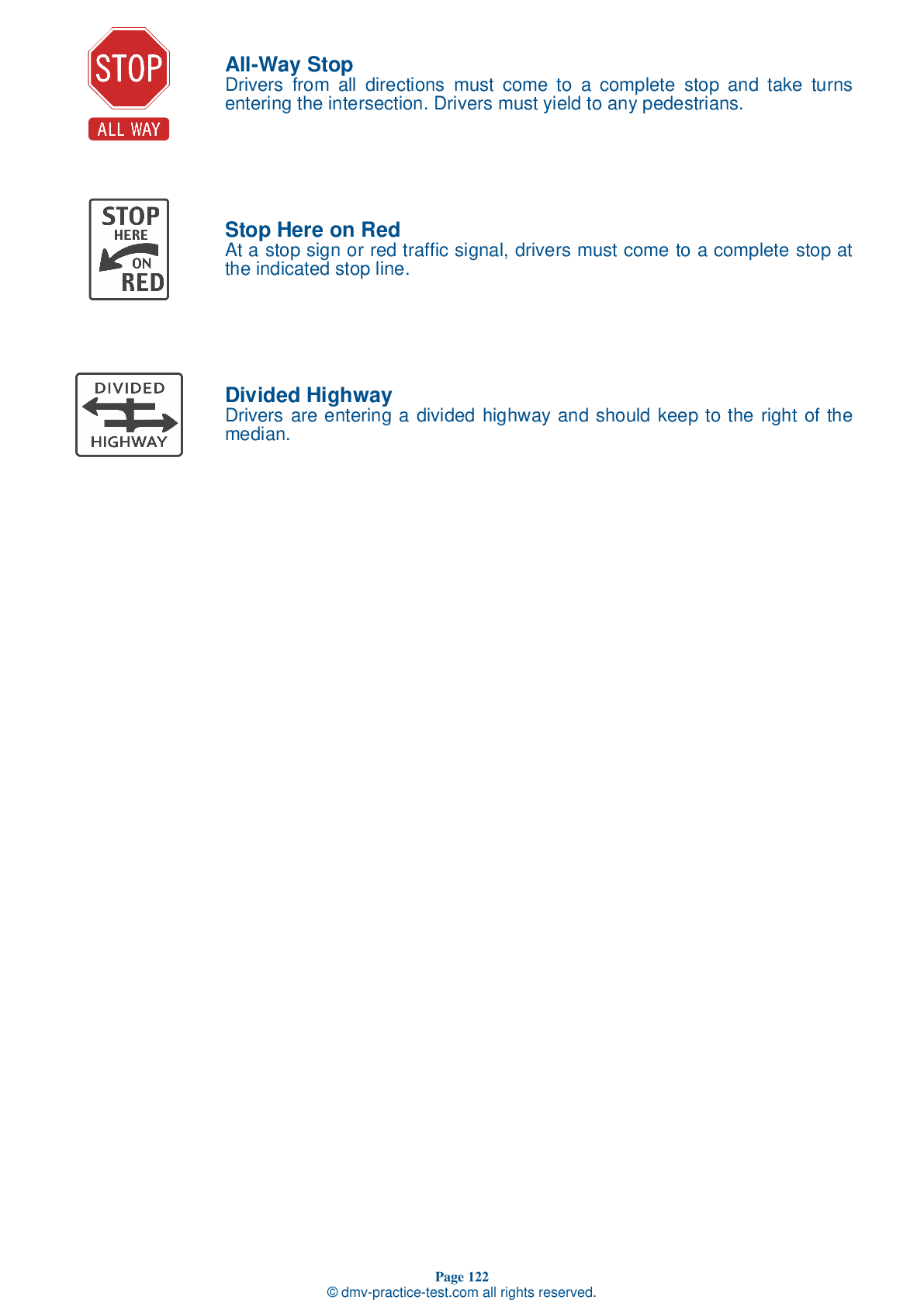Combination Vehicles Practice Test | Hawaii 2026 #1
Train for FREE online with our Hawaii CDL combination vehicle test. The official exam test consists of several obligatory parts, with all of them checking your knowledge of different blocks of road rules. If you need to obtain a HI combination license in 2026, practice as much as possible. Free sample tests published on our website will help you check and improve your knowledge and boost your grades. Please bear in mind that DMV requirements for issuing a combination license may vary from state to state.
1 . More than half of all accident-related truck driver deaths are caused by:
More than half of all accident-related truck driver deaths are a result of truck rollovers. To help prevent a rollover, be sure to load cargo low to the ground and centered on your rig. Take corners slowly and carefully.
2 . If you press the tractor air supply control and your trailer's spring brakes do not release, you should:
It is important that all of a vehicle's equipment is in proper working condition before beginning a trip. If a trailer's spring brakes do not release when you push in the tractor air supply control, you should make sure the air line connections are properly attached and sealed.
3 . The trailer hand valve should be used:
The trailer hand valve (also referred to as the "trolley valve" or "Johnson bar") works the trailer brakes and should be used only when testing them. Using the trailer hand valve while driving could result in a skid.
4 . Place the trailer air supply control in its "emergency" position to test:
Be sure to test the trailer emergency brakes before beginning a trip. After ensuring that the trailer rolls freely, you can test the emergency brakes by pulling out the trailer air supply control, or placing it in the "emergency" position. Pull forward slightly with the tractor and make sure the trailer does not move.
5 . If a trailer begins to skid, it is best for the driver to:
If your trailer begins to skid, you should release the brakes to regain traction. The trailer will begin to straighten out once the wheels begin to grip the road again.
6 . Watching the road ahead:
Making a sudden lane change can be dangerous while driving a combination vehicle. You can avoid the need to make a sudden lange change by looking down the road for upcoming obstacles that will require you to change lanes.
7 . If you must cross traffic while driving a combination vehicle, you should:
Combination vehicles require more space on the road than other vehicles. When entering or crossing traffic while driving a combination vehicle, it is especially important that there is a large enonugh gap in traffic to safely do so.
See the exact questions that will be on the 2026 Hawaii DMV exam.
99.2% of people who use the cheat sheet pass the FIRST TIME
Lillian MCcranie explains how our CDL study guide was helpful in passing the exam and recommends it to everyone.
Cameron tells us how he purchased the CDL exam, and found it to be a useful tool which helped him pass the exam and find a job.



